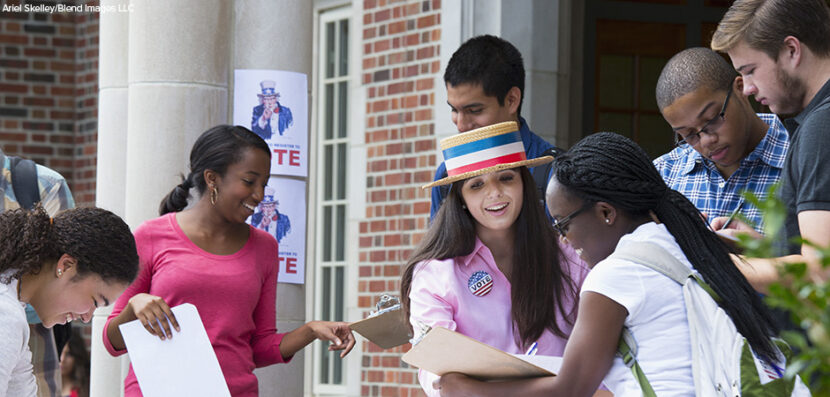
The Debate Over Voter Registration
There are only eight weeks to go until the 2020 general election! One of the key things that voters must do before an election is make sure they are registered to vote. Every state except North Dakota requires that people register before they can vote. But what does that mean? And why do Americans have to register in advance to vote? Why can’t we just walk in to the polling place and cast a ballot on Election Day? This week’s Election Central post examines why this process occurs, how it can vary from state to state, and the questions about whether or not it should be happening it all.
The Case for Registration
Americans are required to register to vote for several reasons. First, it ensures that people only vote a single time. If they didn’t have to register, voters who own or occupy more than one address could just go from place to place, casting multiple ballots. Also, in the days before voter registration, election fraud was common. Party bosses tried to “buy” votes, and ballots were sometimes cast in the name of people who had already passed away. Registration helps ensure the one person only gets one vote. It also helps make certain that the people who are casting ballots have a right to do so in the first place: 1.) they are citizens, 2.) they meet the residency requirements of their particular state, and 3.) they are eighteen years old on or before Election Day.
The Case Against Registration
People against voter registration, however, argue that it discourages eligible people from voting by adding an extra step in the voting process. According to the U.S. Census Bureau, roughly 21 percent of eligible people aren’t registered to vote. Some states also require extra safeguarding procedures, such as requiring a photo ID when a citizen casts their vote. This is another step preventing voter fraud. Critics of the current registration procedures say these added precautions make it more difficult for low-income people, people of color, and recent immigrants to register. For example, getting a government issued photo ID or a drivers license is challenging for some people who work during the day or don’t have easy access to transportation.
How Can We Make Registration Easier?
Is there a way to still require people to register to vote, but in a way that helps make sure no eligible voters are left behind? Many countries already have automatic nationwide voter registration in place, but the U.S. does not. However, some states are already moving in this direction. In 2016, Oregon became the first state to implement automatic voter registration. Several other states also offer same-day registration, which means that you can register and vote at the same time, in the same polling place. The National Voter Registration Act of 1993, a federal initiative, requires states to allow people to register when doing other things, such as while doing business at the DMV or other government offices. And many states now offer online voter registration to make the process easier and more accessible to everyone.


